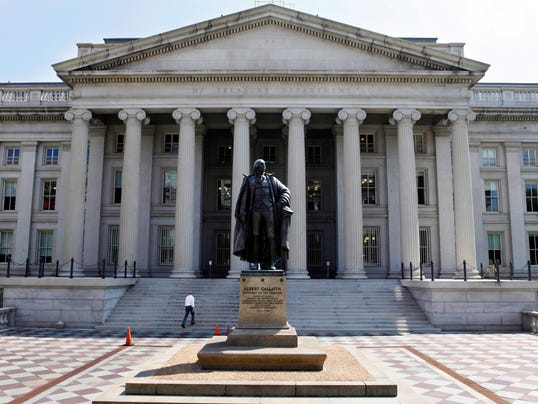The first of several "extraordinary measures" to avoid the debt limit has gone into effect

WASHINGTON – In less that three weeks, the U.S. Treasury will have just $50 billion in cash on hand, Treasury Secretary Jacob Lew told Congress Friday.
That sounds like a lot of money, but the government can spend as much as $60 billion a day — especially in February, when tax refunds alone can total $15 billion.
That means the government will run out of borrowed money by Feb. 27 unless Congress increases the debt limit, Lew said. The government hit that limit Friday, causing the Treasury Department to begin taking measures to conserve cash.
"If Treasury has insufficient cash on hand, it would be impossible for our nation to meet all of its obligations for the first time in history," Lew said.
The Treasury Department stopped issuing securities to state and local governments at noon Friday, instituting the first of what will likely be several steps to stay under the debt limit enacted by Congress.
Under the budget deal passed by Congress last November, the debt limit was temporarily suspended — but only through Friday. Beginning Saturday, the debt limit will be reset to its current level, about $17.2 trillion.
Congress has voted to raise the debt ceiling three times since 2011. But it's missed the deadline each time, forcing the Treasury Department to use what it calls "extraordinary measures" to avoid hitting the debt ceiling.
The first of those measures is to stop accepting deposits from state and local governments, which often need a short-term place to park their proceeds from issuing bonds. Those are called State and Local Government Series bonds, or SLGS.
"From the state and local government's perspective, it's more money and more nuisance to them, and that's unfortunate," said Bob Eidnier, a tax lawyer with Squire Sanders in Cleveland. "State and local governments that have to deal with this get very flustered."
The next steps available to the Treasury would be to delay payments to some pension funds, and to spend down an emergency currency reserve fund.
In the past, those measures have lasted as long as five months. But this time, Treasury Secretary Jacob Lew has warned Congress that they have only until late February before the United States would be forced to default. That's because the Treasury has more money going out than coming in as tax season begins and the IRS starts issuing tax refunds.
Senate Budget Chairwoman Patty Murray, D-Wash., said the expiration of borrowing authority signals "another round of Republican debt limit drama."
"We're now at a point when the Treasury Department will have to take extraordinary measures to ensure the United States can continue to make the payments it owes, including Social Security checks and even tax refunds," she said. "There's no reason to drag this out any longer."
But House Speaker John Boehner, R-Ohio, said Thursday that lawmakers were "still looking for the pieces to this puzzle" and that "no decision has been made" on how to package a debt limit increase.
In the past, Republicans have demanded spending cuts and other budget changes as part of any deal to increase the debt limit, and Boehner said any vote to increase the limit would be controversial. "If Congress wanted to make Mother Teresa a saint, and attach that to the debt ceiling, we probably couldn't get 218 votes."
Follow @gregorykorte on Twitter
As far as the other Countries of the world are concerned the U.S. is financially
ReplyDeleteheaded for a brick wall at 60 mph. Feb. 27 brakes wont help !